During my last 2 weeks in Belgium I thought I would take time on the weekend to visit the Ypres area to do a bit of battlefield recces and also to visit some of the memorials.
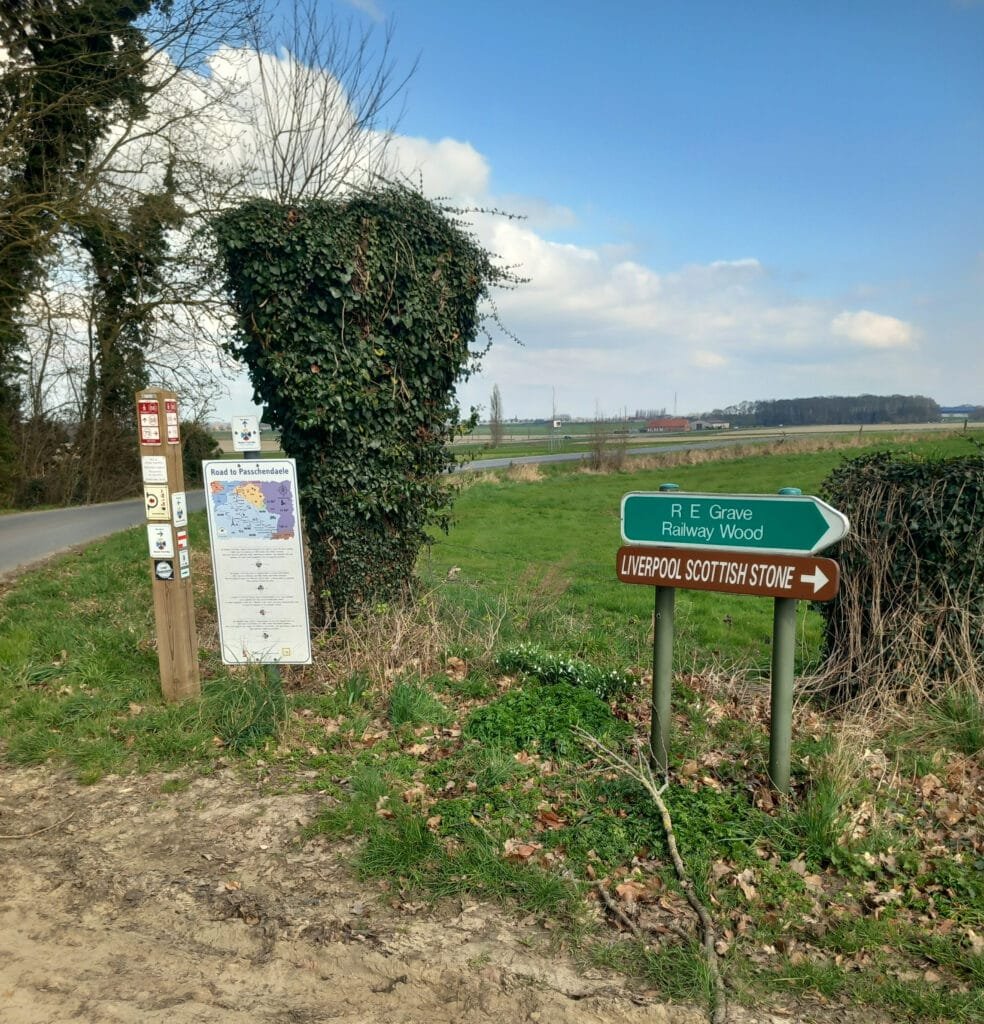
One of the memorials that I always try and take a bit of time to visit when in the area is the Royal Engineer Graves Memorial for the men of 177 Tunnelling Company Royal Engineers. I’ve got into the habit of it being a location that I visit around about lunchtime and try and take a bit of time just to sit down and take in the location, wildlife and to give a moment to think about the men that fought underground.

Its an interesting memorial as it has a Commonwealth War Grave Commission Cross on it but there are no actual graves as it commemorates 12 men of the Tunnelling Company that lost their lives underground and were not recovered.
The other thing is that of the 12 men named on the memorial, 3 are infantrymen attached into the company. Having infantrymen attached into Tunnelling Companies was not unusual it could have been done for several reasons:
- The individual had mining experience from his civilian job.
- They were from a pioneer unit and allocated to work with the Sappers.
- They were from a Infantry unit in the area and were tasked to work with the Sappers as part of their “Working party” duties.
Either way, what ever the reason, their job underground was just as dangerous as for the Sappers that they worked with and they rightly are commemorated on the memorial.
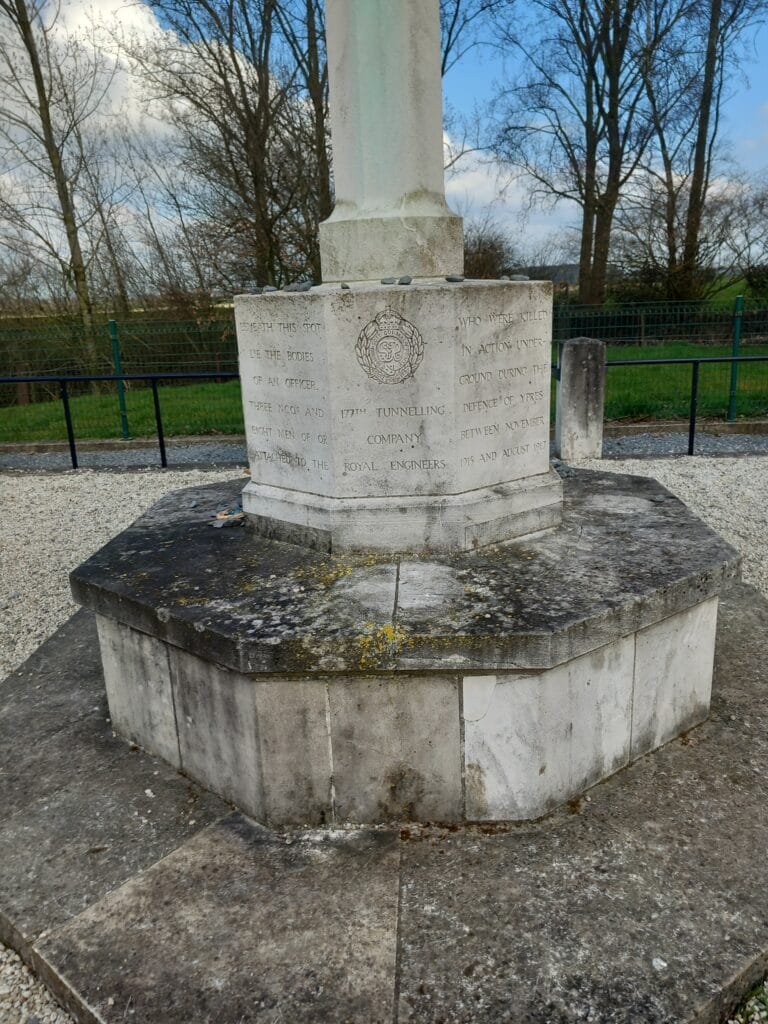
But Railway Wood is worth visiting for more than just the RE memorial.
If you are interested in Tunnelling and the exploits of the men who fought in a world that I just cannot fully comprehend, where Engineering skill and specialist knowledge are vital to keeping you alive as you work and then having to learn the skills of listening for the enemy and counter-mining, then the chances are that you will be thinking of the exploits of the Tunnellers at Hill 60 or Lochnagar Crater on the Somme. Those are really important sites and the exploits are incredible but I would suggest that perhaps you should consider Railway Wood and the local area.
Why? Well to put it simply there is a bloody lot of big holes in the ground all around the area!!
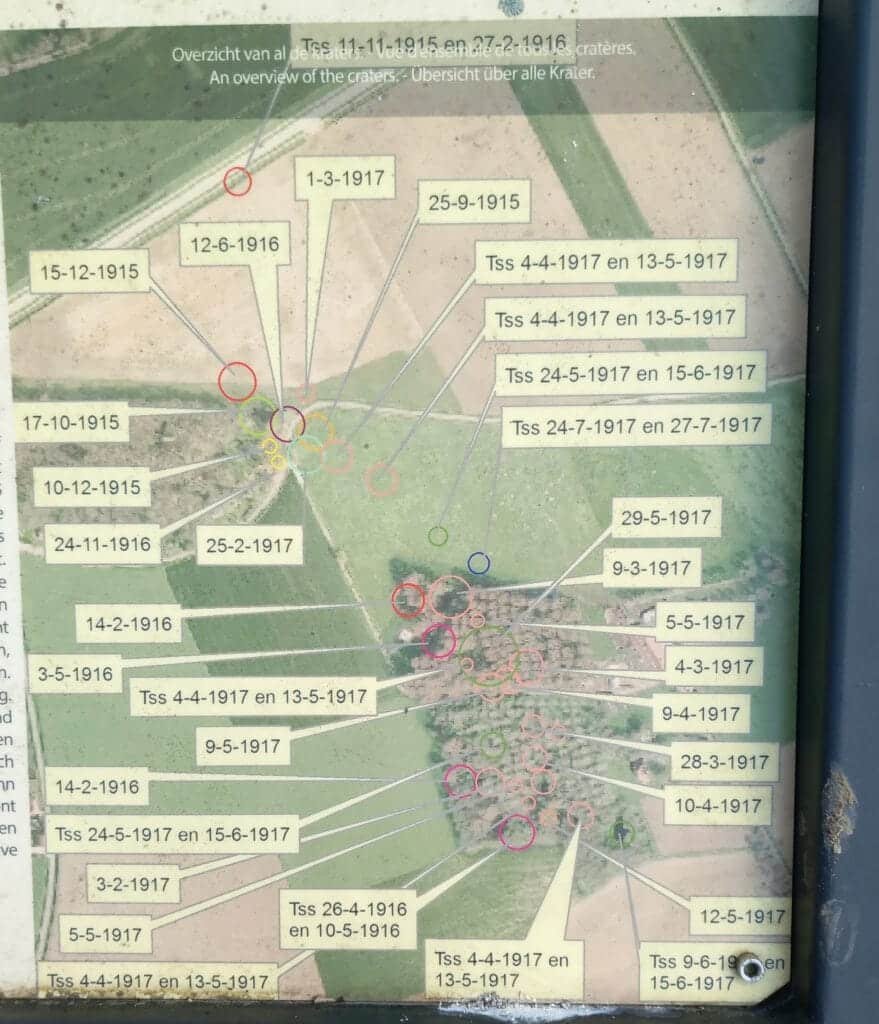
The 177th Tunnelling Company was active in the Ypres area between Autumn 1915 through to August 1917, with a hard and dangerous fight underground with British and German miners. The area is covered with over 33 Craters created by both sides and covered from Hooge across to Railway Wood
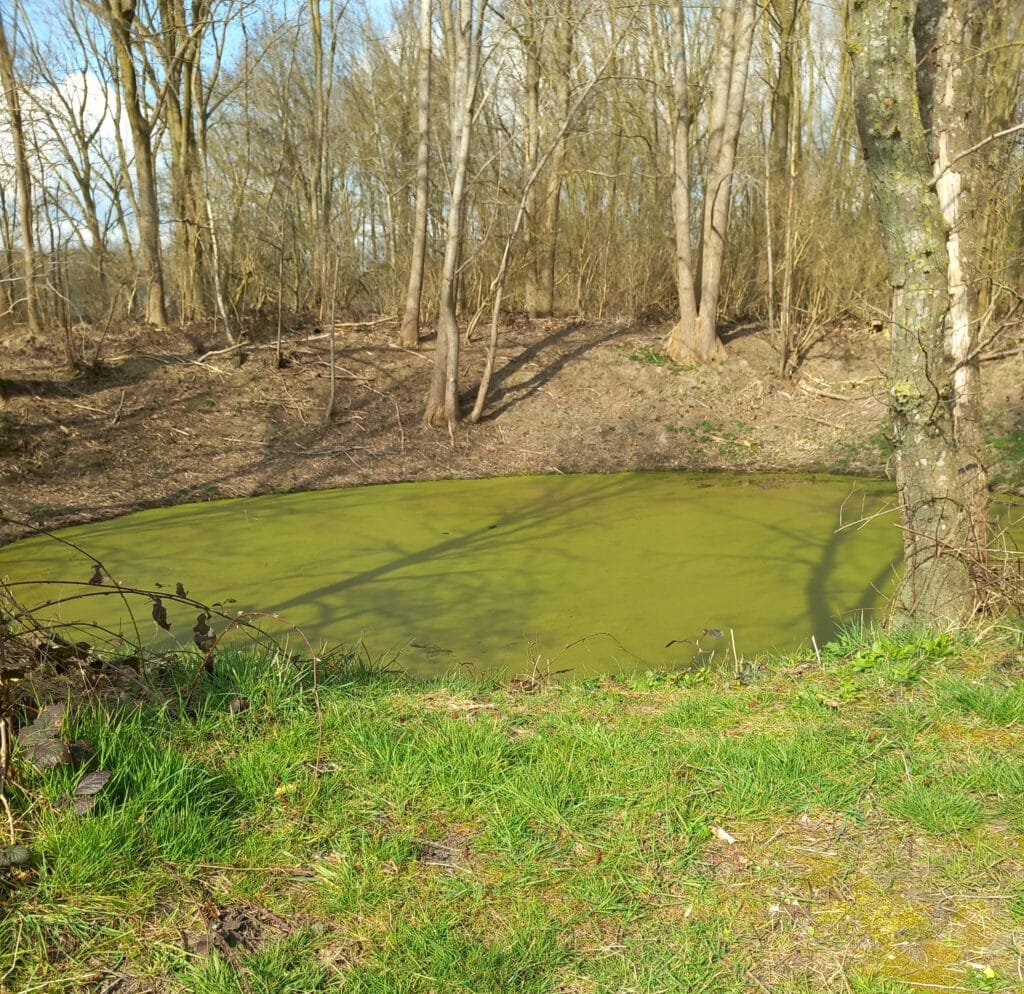
177 Tunnelling Company RE was formed in Jun 1915 and in the Autumn of 1915 it moved to Ypres and built dugouts in the ramparts of the town, this was done from September to November 1915. From November 1915 the Company moved out of Ypres and took over responsibility for mining and counter-mining activity in the Railway Wood to Hooge area and particularly with work under Bellenwaerde Ridge near Zillebeke.
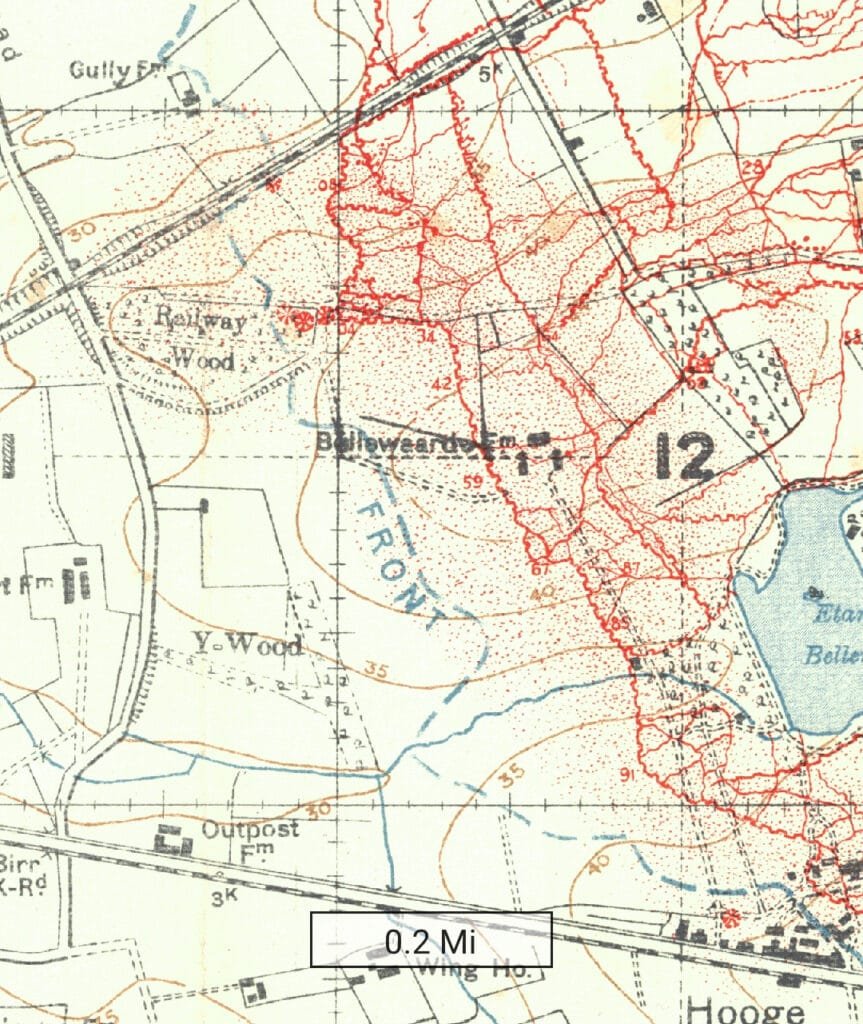
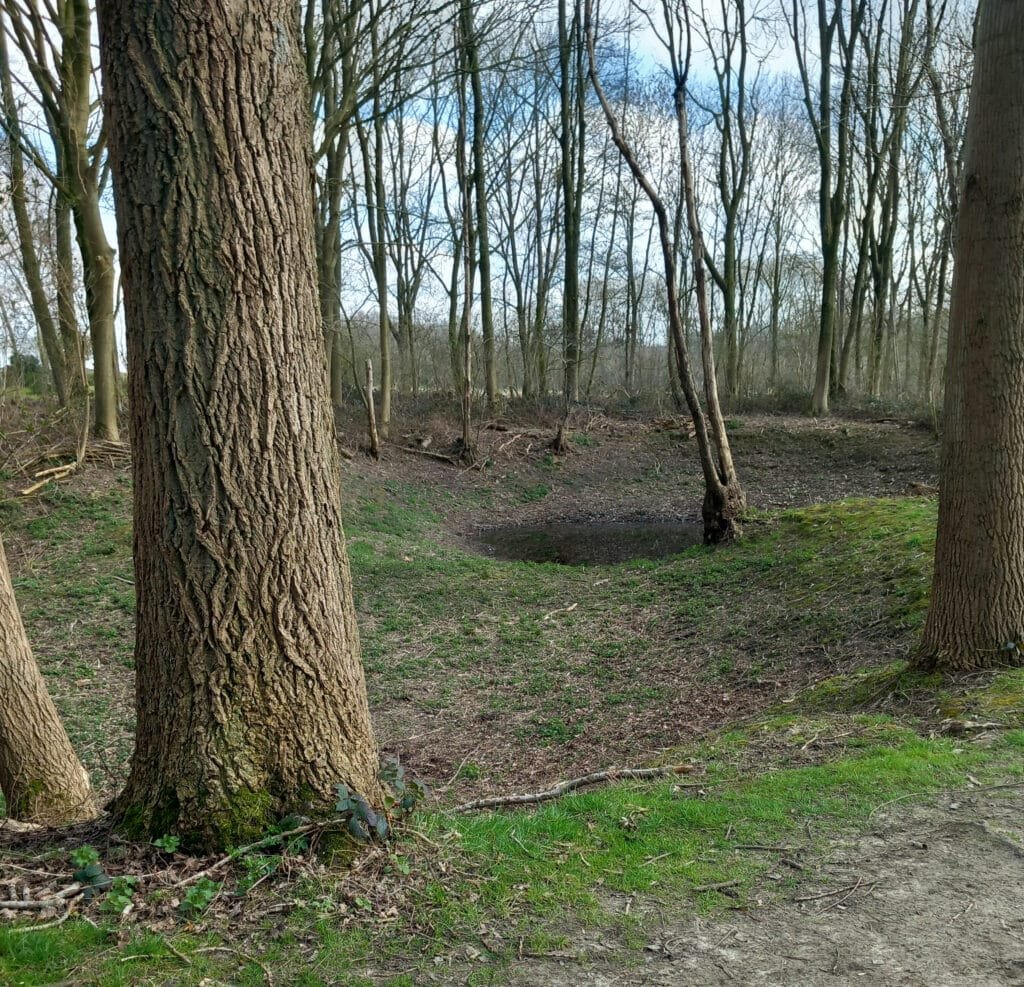

While mining and counter-mining was the main focus of the 177 Tunnelling Company RE they also built and developed an underground Forward Accommodation Scheme at the rear of Railway Wood.
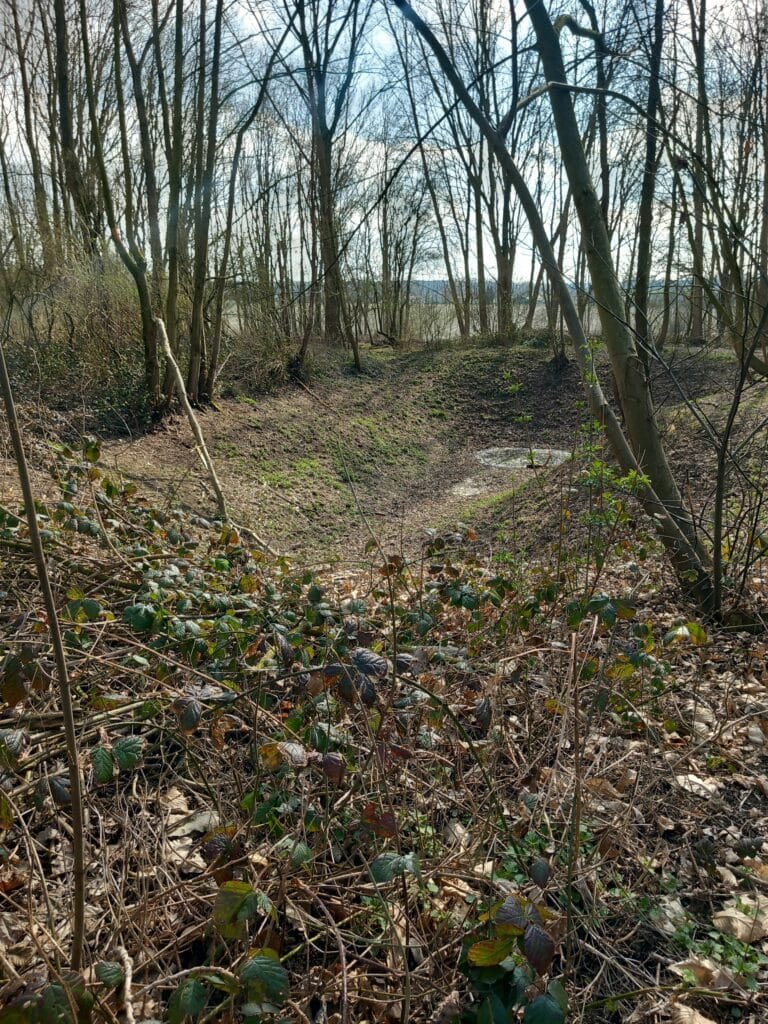
From the photos you can see some of the evidence of the work of the German and British miners through out the wood and it is worth the wander to step away from the main paths onto the smaller tracks to get to see the size and scale of the craters.
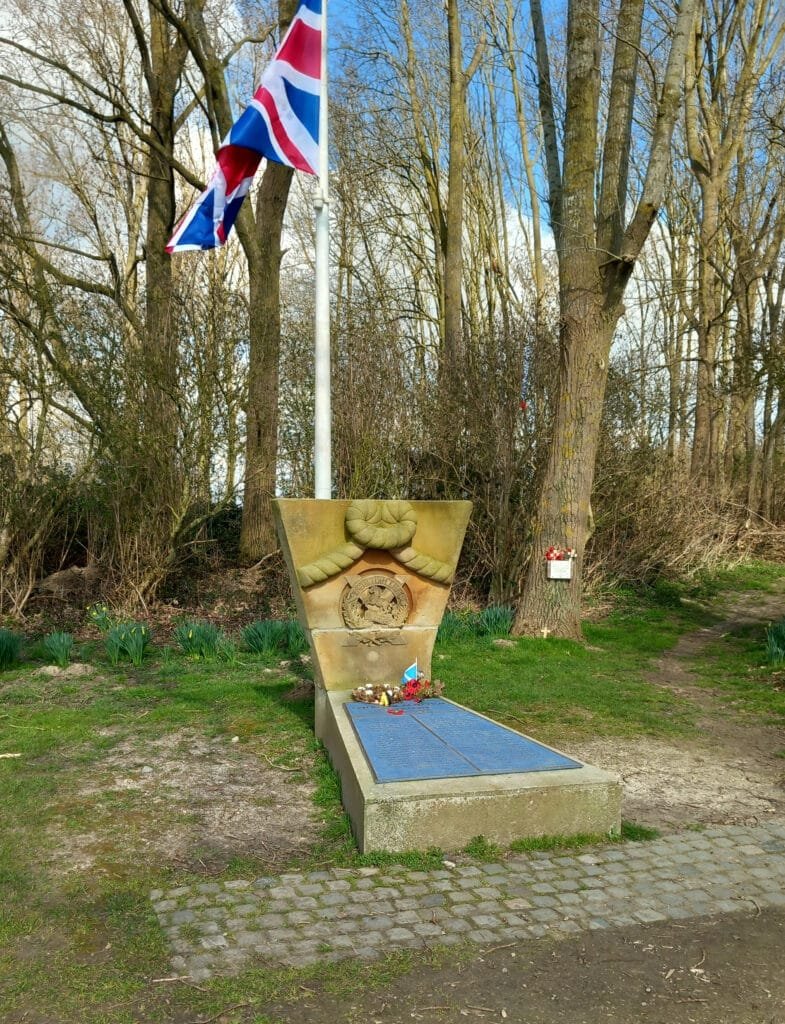
The wood also has a lovely memorial to the London Scottish and it is worth just taking a short break to consider how much fighting occurred here across the war both on the surface and below the ground.

So while the craters at Hill 60 and the Caterpillar are important and visually impressive, I would recommend that if you want to look at and study some vital RE Tunnelling works then visit the memorial and the Craters between Railway wood and Hooge.

